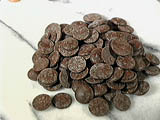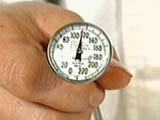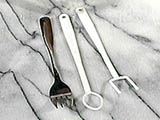![]()
![]()
Tempering is a method of melting and cooling chocolate. It gives chocolate a shiny luster and that great "snap" you hear when you break the candy into bite-sized pieces.
Tempering chocolate not only produces some delicious results, it's also an opportunity to learn a little science. Temperature plays an important role in the candy-making process. Different fat groups in chocolate have different melting points. The tempering process stabilizes the cocoa butter (fat) crystals found in chocolate so that they become more uniform in size.
There a several ways to temper chocolate at home. We've selected one of the easier methods. Angela Arzave, Pastry Chef of EOS restaurant in San Francisco, showed us a simple method and some great ways of making chocolate candies and treats.
Essential Ingredients & Tools
Optional Ingredients & Tools
|
To Do and Notice
Before you begin, see the sidebars on the next page to decide what type
of candy you'd like to make. You'll have to prepare the ingredients before
you start tempering the chocolate.
Important Note:
Make sure your ingredients, tools, and work environment are completely
dry during the entire process! Even a small amount of water will turn
your smooth liquid chocolate into a sticky, lumpy mess. Also be sure that
your kitchen is not too hot. The room's temperature should be 70 degrees
or lower. Now you're ready to begin.
|
|




